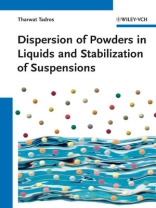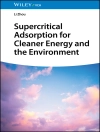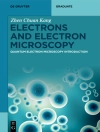Teaching the fundamental knowledge required for successful dispersion of powders in a liquid, this book covers a host of topics — from recent advances to industrial applications.
In 15 chapters it supports formulation chemists in preparing a suspension in a more rational way, by applying the principles of colloid and interface science, while at the same time enabling the research scientist to discover new methods for preparing stable suspensions.
Essential reading for those working in the pharmaceutical, cosmetic, food, paint, ceramic and agricultural industries.
Inhaltsverzeichnis
Preface
GENERAL INTRODUCTION
Fundamental Knowledge Required for Successful Dispersions of Powders into Liquids
Particle Dimensions in Suspensions
Concentration Range of Suspensions
Outline of the Book
FUNDAMENTALS OF WETTING AND SPREADING
Introduction
The Concept of the Contact Angle
Adhesion Tension
Work of Adhesion Wa
Work of Cohesion
Calculation of Surface Tension and Contact Angle
The Spreading of Liquids on Surfaces
Contact Angle Hysteresis
THE CRITICAL SURFACE TENSION OF WETTING AND THE ROLE OF SURFACTANTS IN POWDER WETTING
The Critical Surface Tension of Wetting
Theoretical Basis of the Critical Surface Tension
Effect of Surfactant Adsorption
Dynamic Processes of Adsorption and Wetting
Wetting of Powders by Liquids
STRUCTURE OF THE SOLID-LIQUID INTERFACE AND ELECTROSTATIC STABILIZATION
Structure of the Solid-Liquid Interface
Structure of the Electrical Double Layer
Distinction between Specific and Nonspecific Adsorbed Ions
Electrical Double-Layer Repulsion
van der Waals Attraction
Total Energy of Interaction
Flocculation of Suspensions
Criteria for Stabilization of Dispersions with Double-Layer Interaction
ELECTROKINETIC PHENOMENA AND ZETA POTENTIAL
Stern-Grahame Model of the Double Layer
Calculation of Zeta Potential from Particle Mobility
Measurement of Electrophoretic Mobility and Zeta Potential
Electroacoustic Methods
GENERAL CLASSIFICATION OF DISPERSING AGENTS AND ADSORPTION OF SURFACTANTS AT THE SOLID/LIQUID INTERFACE
Classification of Dispersing Agents
ADSORPTION AND CONFORMATION OF POLYMERIC SURFACTANTS AT THE SOLID-LIQUID INTERFACE
Theories of Polymer Adsorption
Experimental Techniques for Studying Polymeric Adsorption
Measurement of the Adsorption Isotherm
Measurement of the Fraction of Segments p
Determination of the Segment Density Distribution p(z) and Adsorbed Layer Thickness delta h
Examples of the Adsorption Isotherms of Nonionic Polymeric Surfactants
Adsorbed Layer Thickness Results
Kinetics of Polymer Adsorption
STABILIZATION AND DESTABILIZATION OF SUSPENSIONS USING POLYMERIC SURFACTANTS AND THE THEORY OF STERIC STABILIZATION
Introduction
Interaction between Particles Containing Adsorbed Polymeric Surfactant Layers (Steric Stabilization)
Flocculation of Sterically Stabilized Dispersions
Bridging Flocculation by Polymers and Polyelectrolytes
Examples for Suspension Stabilization Using Polymeric Surfactants
Polymeric Surfactants for Stabilization of Preformed Latex Dispersions
PROPERTIES OF CONCENTRATED SUSPENSIONS
Interparticle Interactions and Their Combination
Definition of ‚Dilute‘, ‚Concentrated‘, and ‚Solid‘ Suspensions
States of Suspension on Standing
SEDIMENTATION OF SUSPENSIONS AND PREVENTION OF FORMATION OF DILATANT SEDIMENTS
Sedimentation Rate of Suspensions
Prevention of Sedimentation and Formation of Dilatant Sediments
CHARACTERIZATION OF SUSPENSIONS AND ASSESSMENT OF THEIR STABILITY
Introduction
Assessment of the Structure of the Solid/Liquid Interface
Assessment of Sedimentation of Suspensions
Assessment of Flocculation and Ostwald Ripening (Crystal Growth)
Scattering Techniques
Measurement of Rate of Flocculation
Measurement of Incipient Flocculation
Measurement of Crystal Growth (Ostwald Ripening)
Bulk Properties of Suspensions: Equilibrium Sediment Volume (or Height) and Redispersion
RHEOLOGICAL TECHNIQUES FOR ASSESSMENT OF STABILITY OF SUSPENSIONS
Introduction
Steady-State Measurements
Constant Stress (Creep) Measurements
Dynamic (Oscillatory) Measurements
RHEOLOGY OF CONCENTRATED SUSPENSIONS
Introduction
Über den Autor
Tharwat F. Tadros was appointed lecturer in Physical Chemistry at Alexandria University in 1962 and served in this position until 1966. Between 1966 and 1969, he spent his sabbatical leave at the Agricultural University of Wageningen and T.N.O. in Delft, The Netherlands. Thereafter, he joined I.C.I. and ZENECA until 1994, where he researched various fields of surfactants, emulsions, suspensions, microemulsions, wetting, spreading & adhesion, and rheology. During that period he was also appointed visiting professor at Imperial College London, Bristol University, and Reading University. In 1992, he was elected President of the International Association of Colloid and Interface Science. Since leaving ZENECA, Tharwat F. Tadros has worked as a consultant for various industries and has also taught several courses in his specialized field. He is the recipient of two medals from the Royal Society of Chemistry in the UK, and has more than 250 scientific papers to his name.












